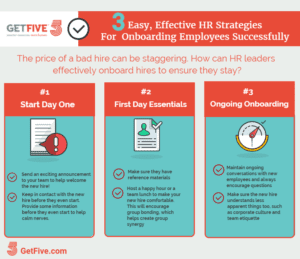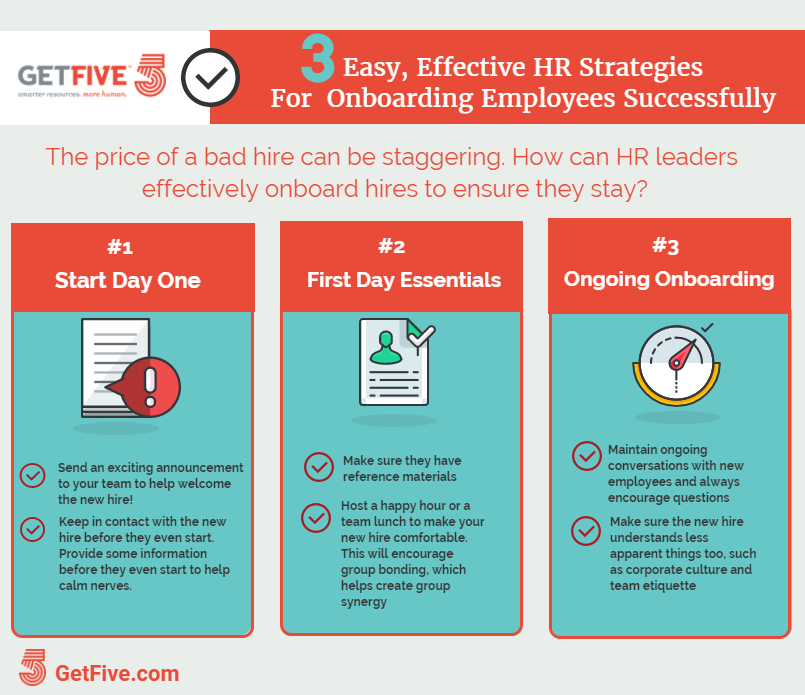
The price of a bad hire can be staggering. The U.S. Department of Labor estimates it is at least 30 percent of the employee’s first-year earnings. Some experts put the number much higher, noting it can be several times the person’s annual salary. Of course, the more prestigious the job title, the higher that number can climb.
While there are many factors that may cause a new hire to leave, the employee’s onboarding experience is a major consideration. Companies often make the mistake of ending the courting process once the hiring paperwork is signed. However, the first weeks and even months leave a critical impression that dramatically influences if an employee will ultimately stay or go.
For HR leaders, onboarding should be a top priority. To welcome a new hire with optimism and open arms, consider these essential onboarding step
1.Start before day one
Onboarding should start before the employee’s first day of work. Send an exciting announcement to the team and include some interesting information about the new member of their work family. Note why this person was hired, what role they’ll play, and any other interesting tidbits the newbie is comfortable sharing.
Additionally, keep in contact with the new hire in the interim. Send out necessary paperwork beforehand. Provide any helpful first-day materials ahead of time. Provide employee log-in credentials and start including them on team emails. Plus, just be nice by touching base to wish them a happy weekend and convey how excited you are to have them start.
2. First-day essentials
The first day at a new job is hectic no matter if the employee is entry-level or executive. A lot of information is thrown their way, so make sure they have reference materials they can use because they can’t be expected to remember everything or everyone. An employee directory that includes who’s who and their responsibilities is extremely helpful, as is any how-to materials such as technology instructions for signing onto the computer or dialing outside the building.
The first day is a great time to host an early happy hour or cater lunch to bring the team together in a calm, fun atmosphere to get to know one another. You’ll encourage that essential bonding right away, which helps create synergy within groups. Plus, who doesn’t like free lunch or drinks? Everyone is happy, everyone wins!
3. Ongoing onboarding
A few weeks in and you should be off to a good start, but onboarding shouldn’t just vanish. Maintain ongoing conversations with your new employees. Have both casual and scheduled meetings to see how things are going. Keep an open-door policy and encourage questions. If something isn’t right, convey how you want to make it right and follow through on finding a solution.
Once employees are understanding the ropes, make sure they understand other, less apparent things, too. This includes corporate and team etiquette, decision-making processes, cadence of meetings, etc. You might also address the style and expectations of the team, including strengths and weaknesses. Being honest, open, and understanding can help ensure a new hire feels welcome, can be productive, and makes a positive impact.









